I can hardly believe it myself, but as of this year, I’ve been living in Bend, Oregon, for over five years!
You might recall that my family and I relocated in October 2017 from Los Angeles to Bend, a move prompted by our desire to put down roots in a place that felt like a better fit for our lifestyle.
After Gemma’s birth, we reprioritized what we wanted for our future, and that was a slower pace, a safer community, better public schools, and being only minutes away from all the things we loved to do, such as hiking, camping, and snowboarding.
At the same time, we didn’t want to live in an isolated mountain town that required long commutes into civilization for medical care or for a date-worthy restaurant meal.
Bend beat out several other places on our short list (which I share in #7 below) and so far, we have had no regrets about our decision to move here. In fact, our only sort-of regret is that we didn’t make the move sooner.
I’ve had so many readers write me in the last few years to ask about our move, some who are itching to make a change themselves, and some who are merely curious how an LA girl is handling the snow. (Hint: I love it!)
I’ve been wanting to give an update on our first six years in Central Oregon, and thought these questions (with my answers) gave a great overview of our experience so far.
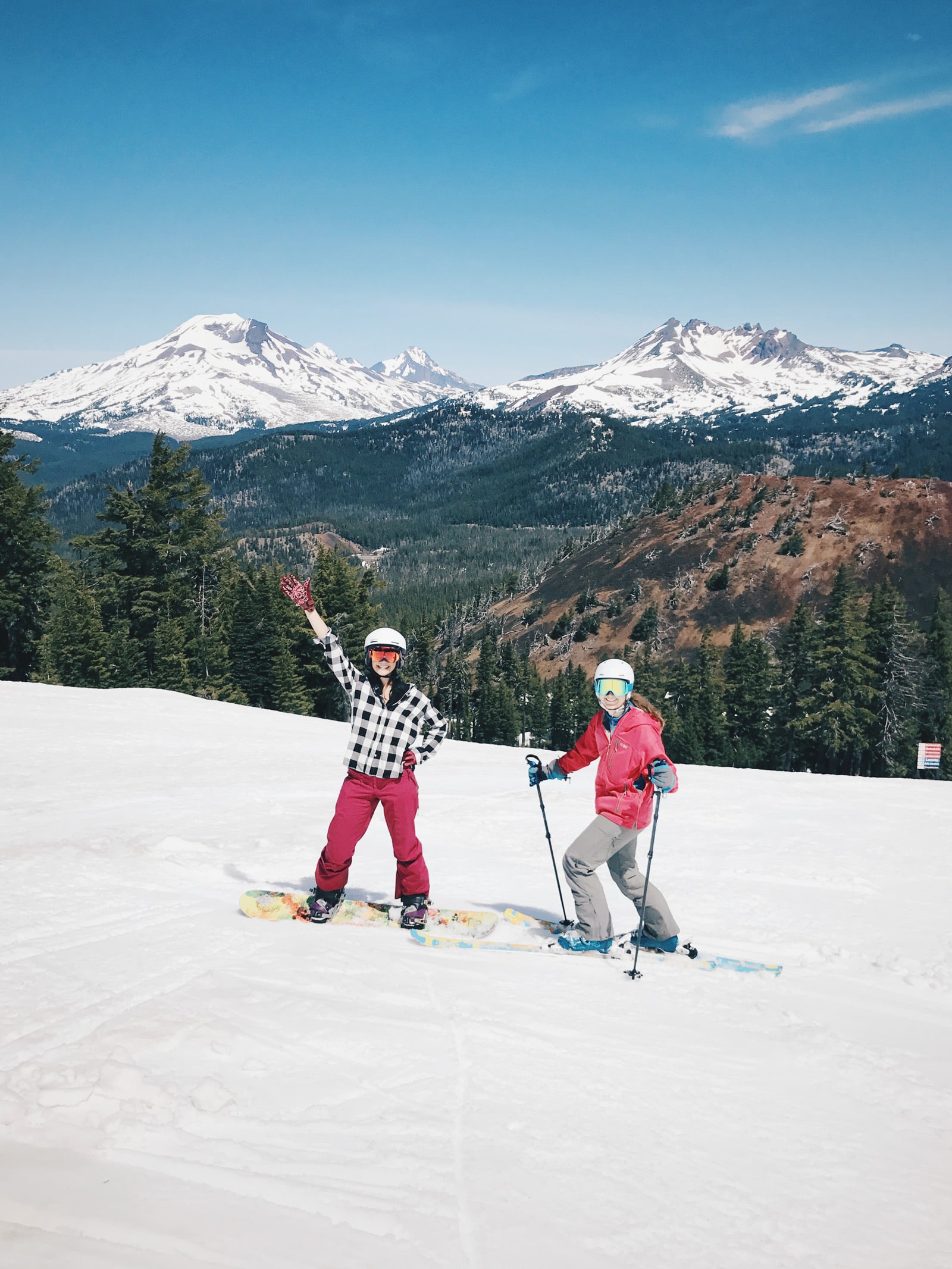
1. How have you adjusted to the change in weather?
Despite spending the majority of our lives in other states, Will and I feel like we’ve adjusted quickly and easily to the weather extremes in Central Oregon.
It helps that Will used to live in Lake Tahoe (which gets far more snow than Bend) and I spent my childhood in Las Vegas (which regularly climbs to 110°F in summer).
We chose Bend for its four-season climate, and we visited at the peak of every season (including wildfire season), so we went into this knowing what to expect.
The winters feel long here, but we love it because it extends the season for snowboarding and skiing, which we are so fortunate to have a half-hour away from our house.
(I still can’t believe we used to drive three hours each way to our little local resort in Southern California, or six hours to Mammoth Mountain if we wanted any decent snow.)
I find myself looking forward to the start of every season because it always means new activities, and our lives are very much centered around outdoor recreation. Even on the most blustery blizzard day, or the sunniest hottest day, we’re outside enjoying the mountains, lakes, or river in some form.
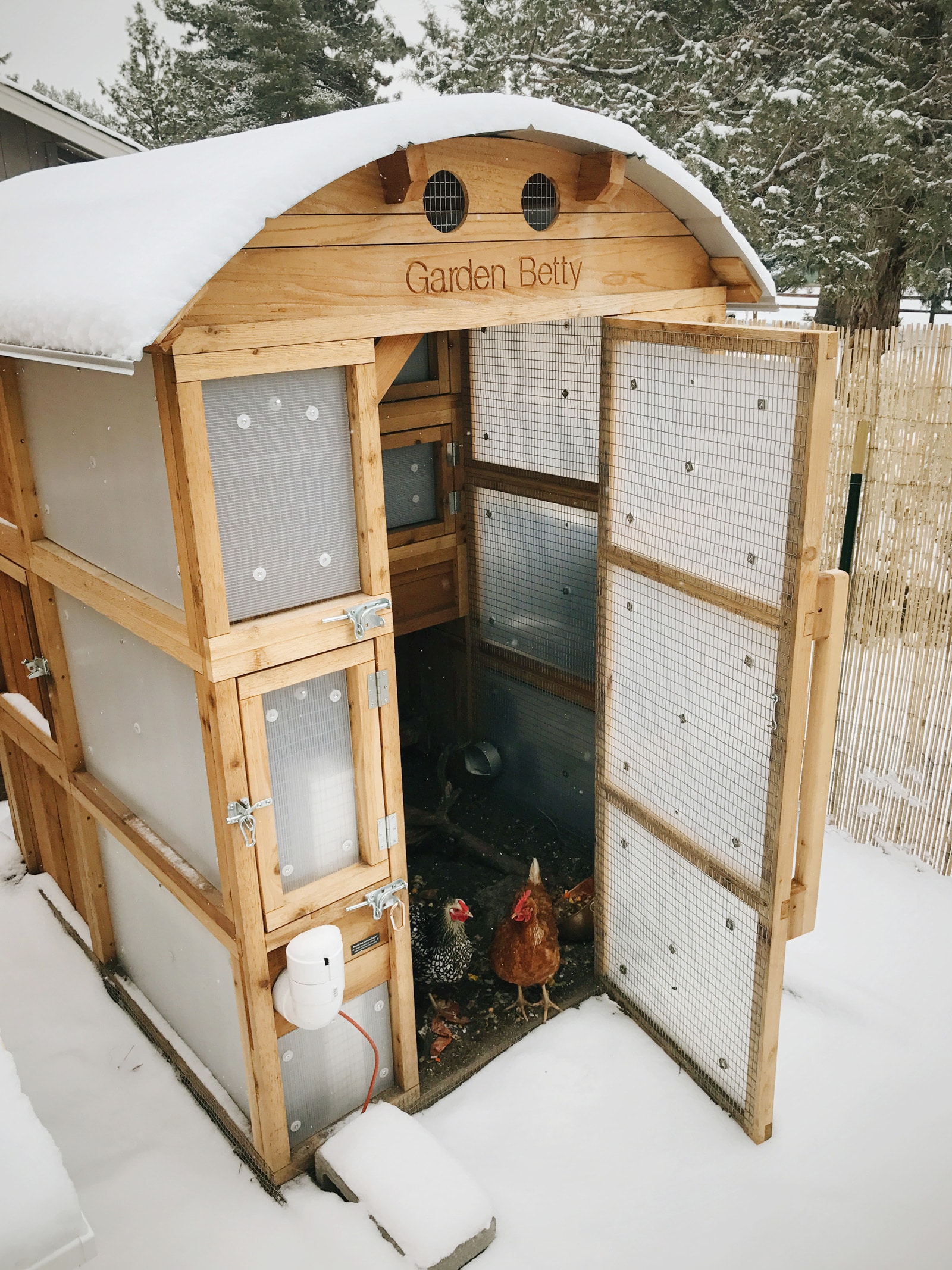
2. How have the chickens adjusted to the change in weather?
A few days after we moved to Bend, we actually had snow flurries! The chickens probably didn’t know what to think, but they lived through their first winter without frostbite or any weather-related issues.
(They also made the nearly 1,000-mile road trip with us seamlessly, which I wrote about in detail if you’re planning to make a move with chickens in the near future.)
I wouldn’t say they’re psyched to go outside on the rare days that it snowed in town, but we usually tried to keep a clear path for them in the yard.
We have a great chicken coop that came with storm panels to keep the wind and rain out, and the heated water bowl we used all season long worked very well. We had no heating in the coop and found no need for it, despite lows in the teens.
I started using wood pellets as the bedding in their coop, and so far it’s been much quicker to clean than our previous choice of sand.
In winter, it doesn’t turn solid with frozen poop, and in spring, it’s easy to rake out to dump in the compost pile. We stock up on wood pellets in summer when prices are low (and inventory is high).
We feed our chickens their typical diet of homemade whole-grain chicken feed, as well as weeds, dried mealworms and grubs, and kitchen scraps.
Today, we have four chickens who free-range around our property and thrive with no supplemental heating or light.
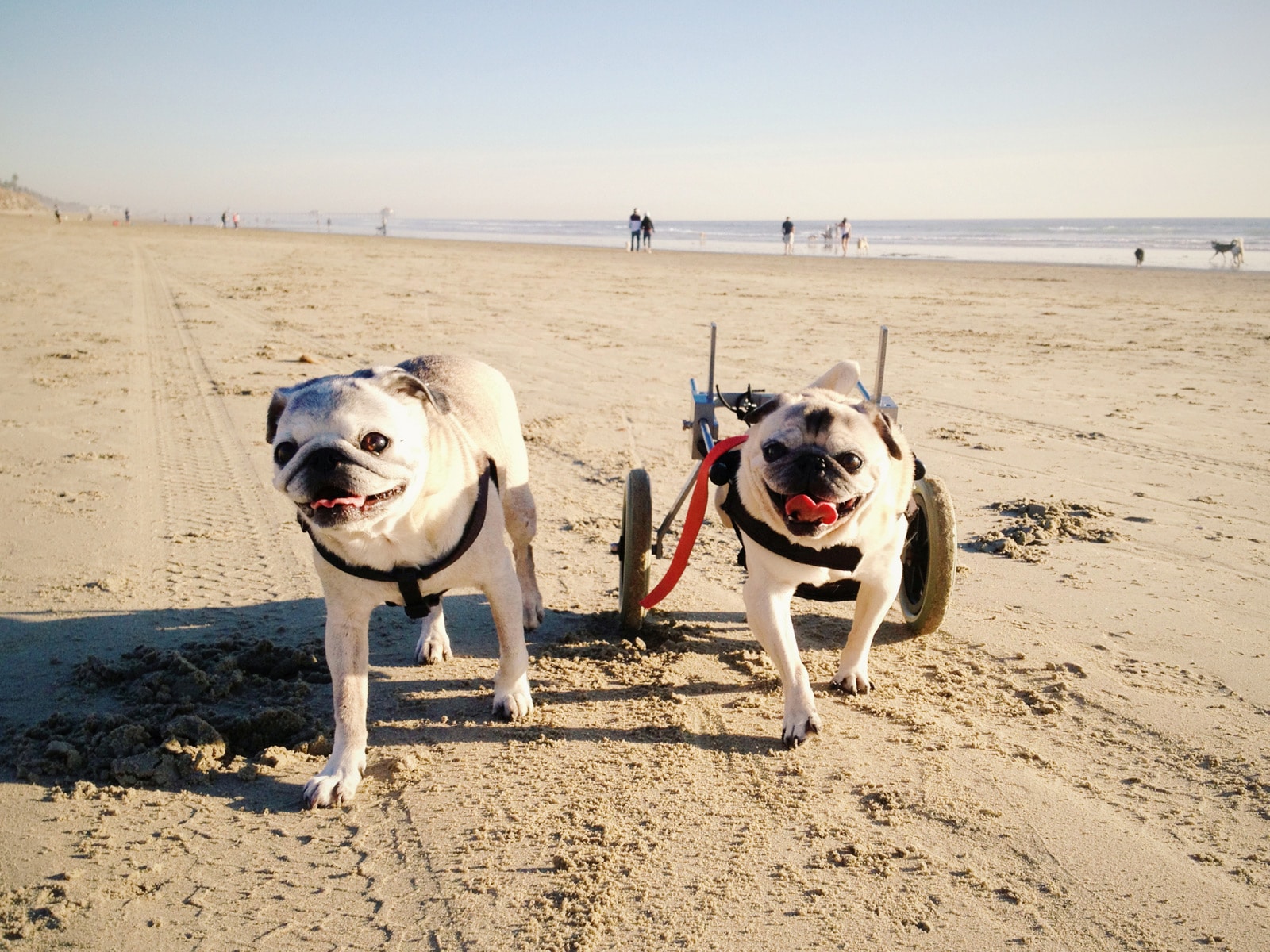
3. What happened to your pugs?
Bebe (who suffered from severe hip dysplasia) was euthanized at home in June 2017 after a well-fought battle with the disease. (I wrote more about the homemade dog food we fed her for several years, which greatly improved her quality of life.)
She was 14 years old. Up until the week before her death, she was full of spunk and was such a happy little pug.
I know of no other dog that traveled and camped as much as she did (11 states in 5 months during the making of The New Camp Cookbook!) and brought so many smiles to people’s faces along the way as she co-navigated the road with Chinki by her side.
Chinki passed away in her sleep in March 2018 at the ripe old age of 16. She had gotten to the point where she was primarily blind, lame in her hind legs, and anxious whenever we left her alone at home, so we brought her everywhere with us—including the days we went snowboarding.
We’d make her comfortable in the car with portable heaters, pillows, and blankets, and check on her every hour to give cuddles and treats.
She took her last breath in Will’s arms at Mount Bachelor on a beautiful spring day that was filled with good energy.
After a long and amazing life, we have no doubt she’s romping happily with all of her departed sisters (including Gisele, Kimora, and Iman) with a bottomless supply of pork shank bones at her disposal.
Currently, we have no plans to bring another dog into our home, and probably won’t for a while. We miss the pugs dearly and feel so fortunate to have had them in our lives as long as we did.
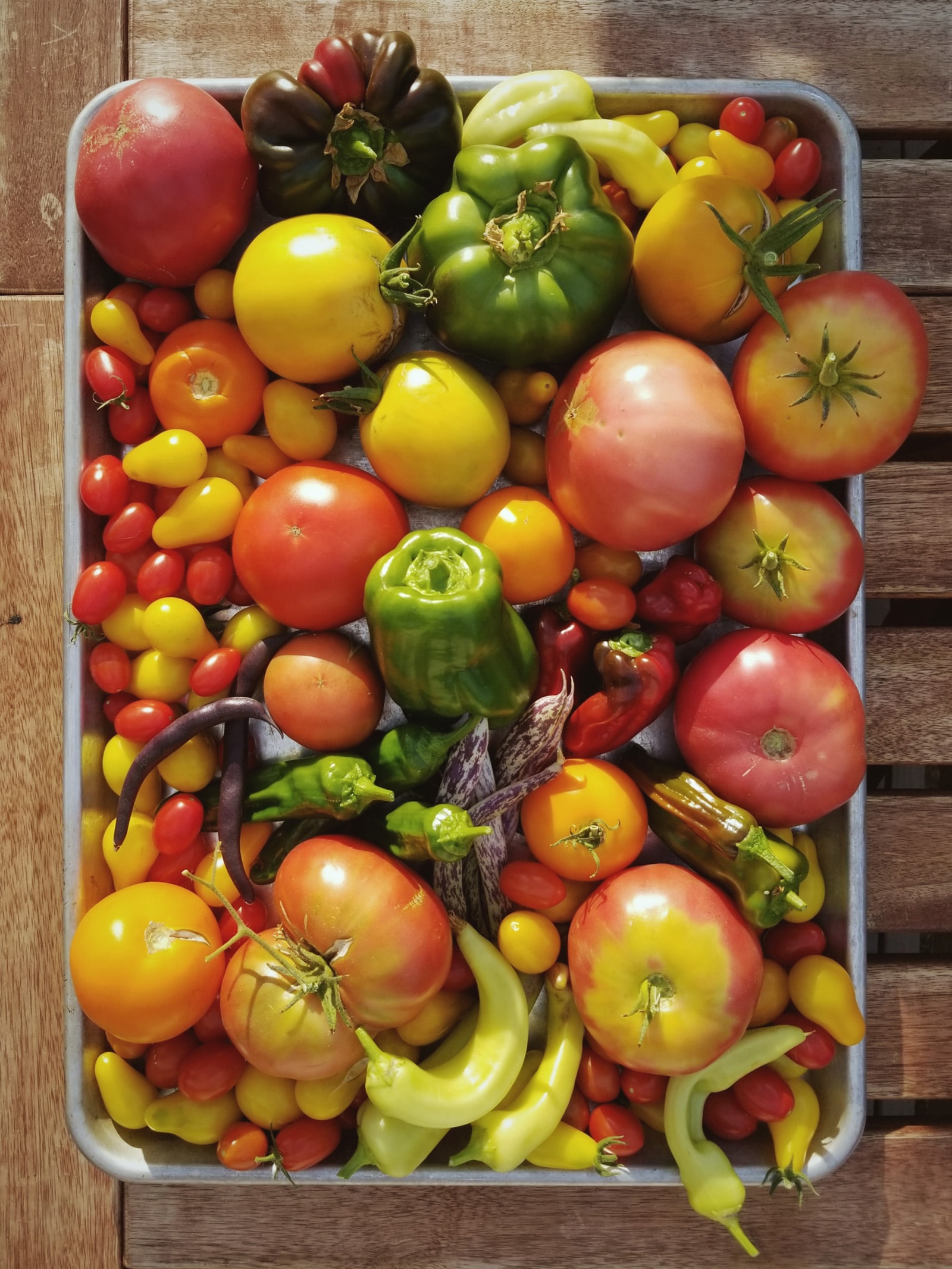
Disclosure: If you shop from my article or make a purchase through one of my links, I may receive commissions on some of the products I recommend.
4. Do you currently have a garden? What challenges have you faced in a colder growing climate?
When we lived in a rental the first two years, I started a small container garden on the deck as a practice run.
The next summer, I focused on growing tomatoes and peppers and was able to move them outside in early May and keep them alive through summer freezes (yes, that’s a thing here).
Learn more: Grow Tomatoes Like a Boss With These 10 Easy Tips
Those first two years, I had a surprisingly good harvest with the indeterminate tomatoes I grew in these fabric pots, the determinate tomatoes I planted in the Gardener’s Revolution planter kit, and the GreenStalk Garden towers that were filled with summer squash, cucumbers, beans, peppers, flowers, and herbs.
(By the way, using code gardenbetty10 will get you $10 off any of the tiered GreenStalk Garden systems.)
It was certainly a strange experience to cover my plants well into June to protect against frost. I’ve realized that Central Oregon weather is unpredictable, changing from one day to the next. (Never trust the forecast more than two days out!)
Being a gardener here means you also become a meteorologist of sorts. Tracking seasonal weather patterns, monitoring nightly lows, learning that our designated USDA Hardiness Zone of 6b is not truly accurate because of all the microclimates in town (I actually aim for zones 4 to 5 to be safe).
It’s all part of the gig and I don’t think I’ve ever analyzed the weather as much as I have since moving to Bend!
I’ve learned a lot so far, and am excited to learn more as I experiment in my new garden (where I grow things year-round without a greenhouse).
Related: 13 Vegetables For Your Winter Garden That Are More Cold-Hardy Than Kale
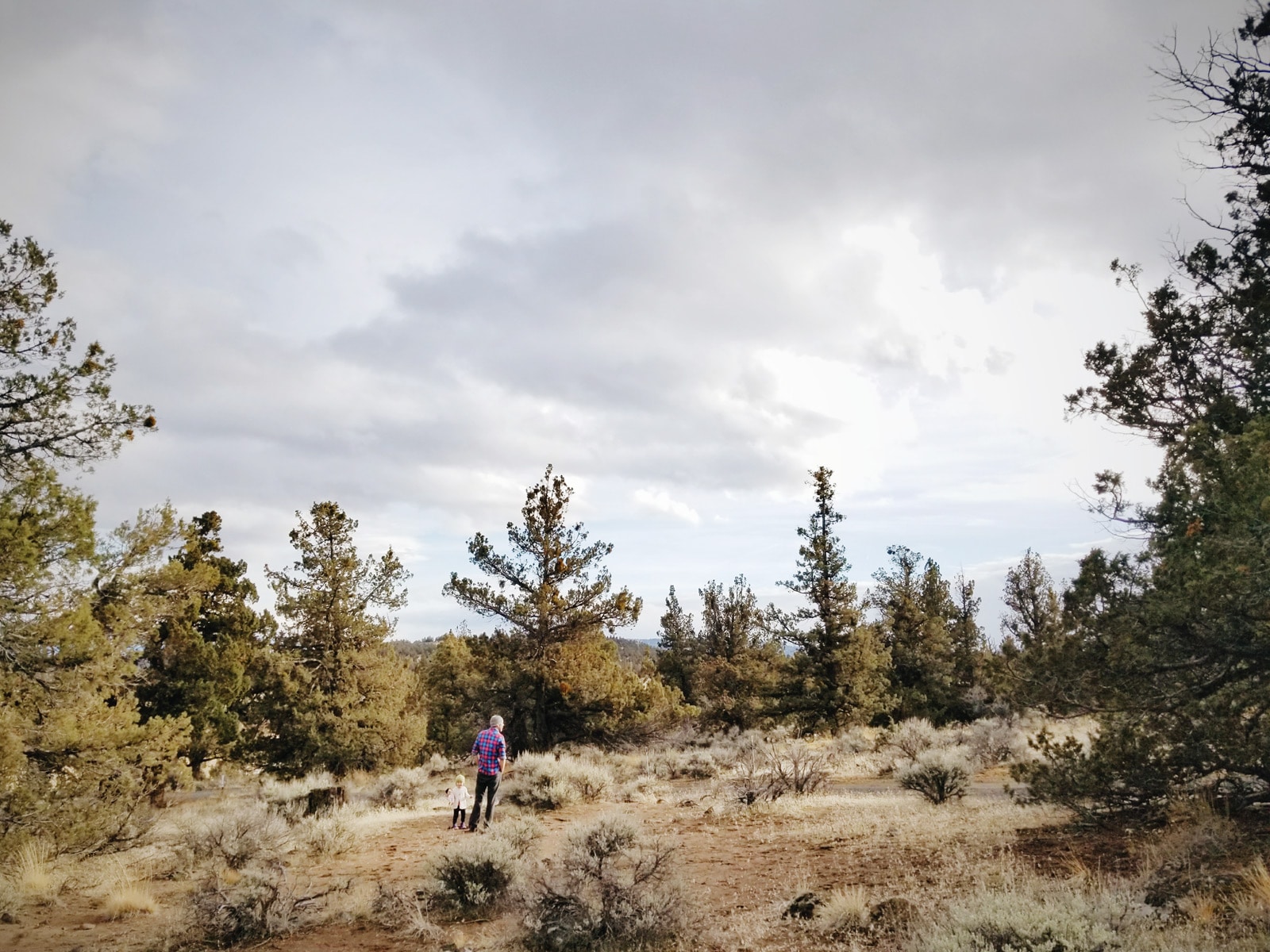
5. How’s the house hunt going?
We rented a house during our first two years in Bend while continuing to look for our forever home.
Update: Since I originally wrote this post in 2018, we became proud landowners in June 2019 and will finally begin the journey of building our house! You can follow along at Garden Betty Builds a House.
We’re really glad we decided to rent first, because our initial impressions of all the neighborhoods here changed quite a bit the more we explored. Areas of town that we once considered buying in were no longer on the list for one reason or another.
Bend is a hot real estate market, and while it’s not as bad as LA, prices are much higher than they were just a few years ago.
We took our time house-hunting—more than two years! After not finding an existing home (or even a fixer-upper) that met all of our needs and budget, we decided to switch gears and look for land so we could build a home exactly the way we wanted.
Read more: How We Found Land to Build On—and How You Can, Too
I used to seesaw between wanting a small, simple home (not our dream home, but a home in which we can fulfill our dreams because we’d be able to pay it off quickly and live debt-free), or a larger, more expensive property that we can develop into our dream home (even if it might leave us with less time and money for travel and adventure).
Both have their pluses and minuses, and we definitely don’t want to outgrow our house or spend our lives working to pay the mortgage.
With our new property and the house plans we’ve designed for it, we think we’ve found a happy medium that’ll allow us to maintain our lifestyle while also securing our family’s future.
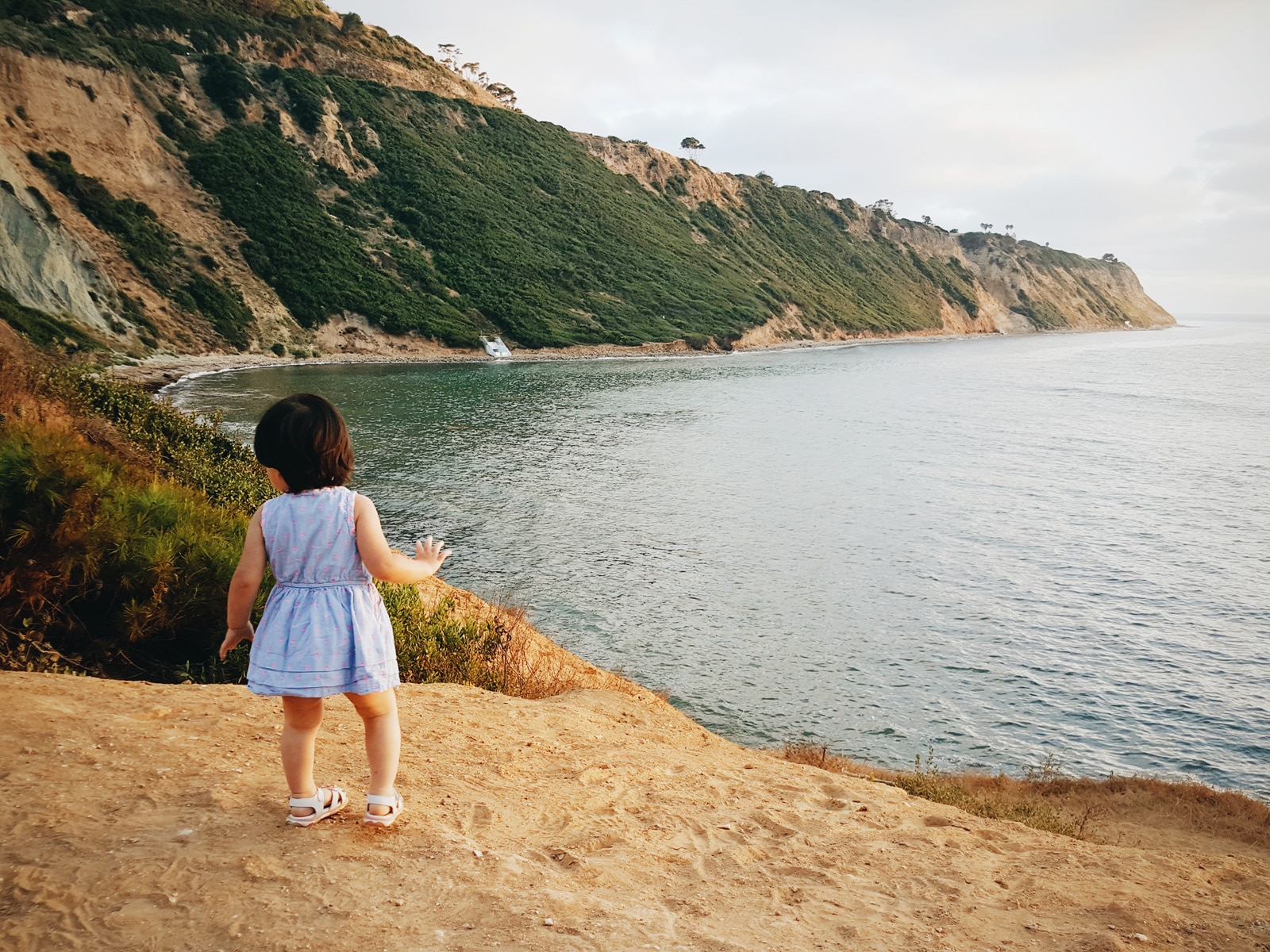
6. Do you miss Southern California?
Not really.
We miss our friends and we miss the exceptional diversity of markets that we had in LA.
On occasion, we also miss the late-night food culture that we had in the city (though as parents now, we don’t find ourselves traipsing out of the house at 10 pm like we used to for a little nosh).
The foghorns that I used to hear from our house on the coast have been replaced by the occasional distant rumble of the train in Bend.
Instead of starlings singing in our feijoa tree, we hear quail calling from the rabbitbrush. Beach days are now spent on the river or lakes, which fill my desire for being close to water.
As much as I loved my time in LA, I can’t really think of anything that makes me want to move back—not even the ocean, which I thought I’d be missing a lot more. I think we moved at the right time, just as I was ready for a change.
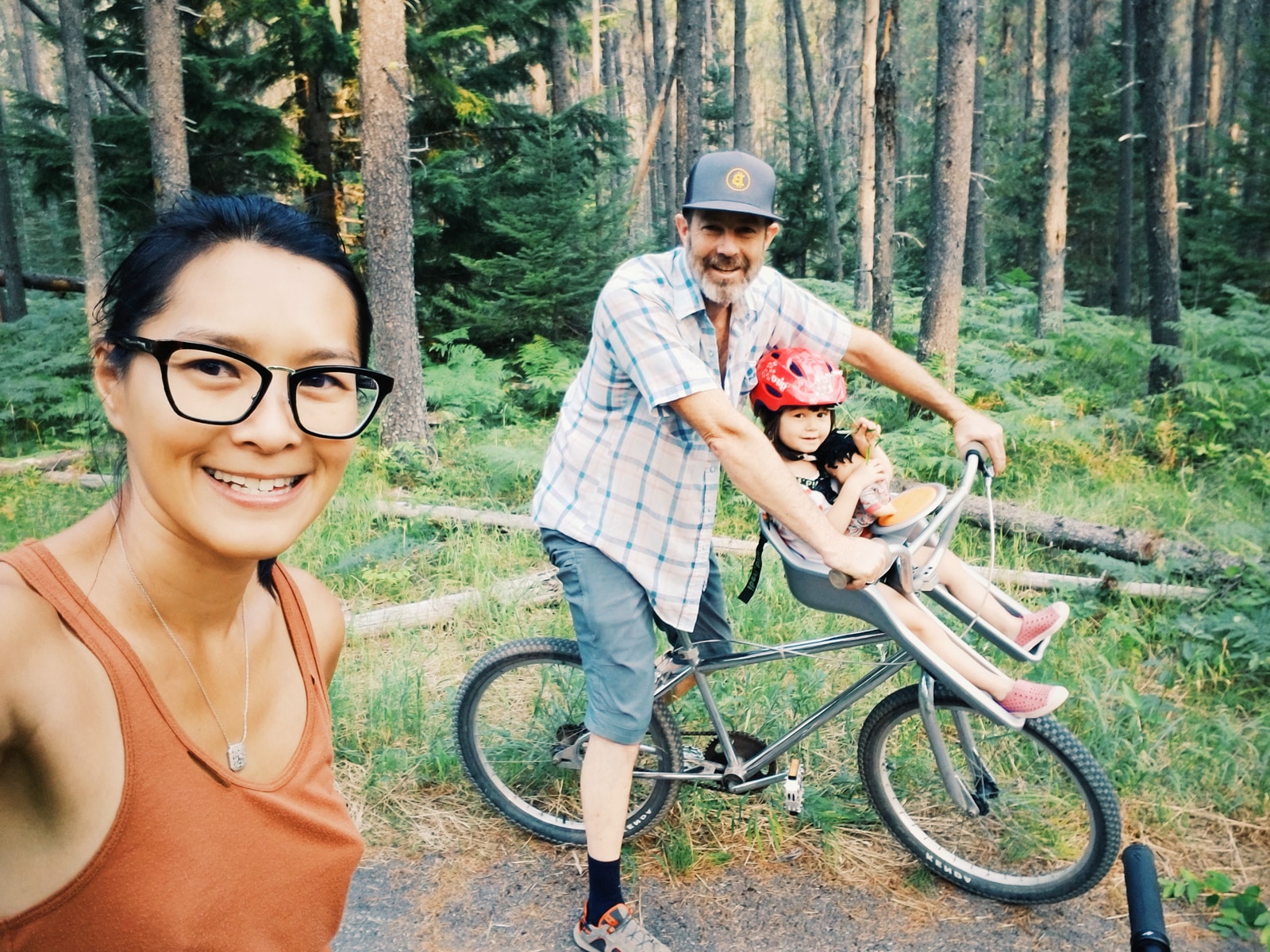
7. What other towns did you consider before you settled on Bend?
At some point in the early research phase, we considered island living in Puget Sound, Washington; country living in Driggs, Idaho; and mountain living in Durango, Colorado. Montana made the list as well, but I crossed it off because of the brutal winters.
These were all places we had visited and loved, but despite promises of endless adventure and outdoor beauty in each location, we ultimately felt they were too small for us, community- and opportunity-wise.
We wanted a good mix of small-town living and big-city amenities; a large enough network of open and like-minded people for making new friends; an entrepreneurial and creative environment that kept us stimulated; quick access to the outdoors; and ease of travel.
Bend was the only town on our list that ticked all the boxes.
At this stage in our lives, we can’t imagine being anywhere else. Bend is beautiful, inspiring, and exactly what we hoped it would be.
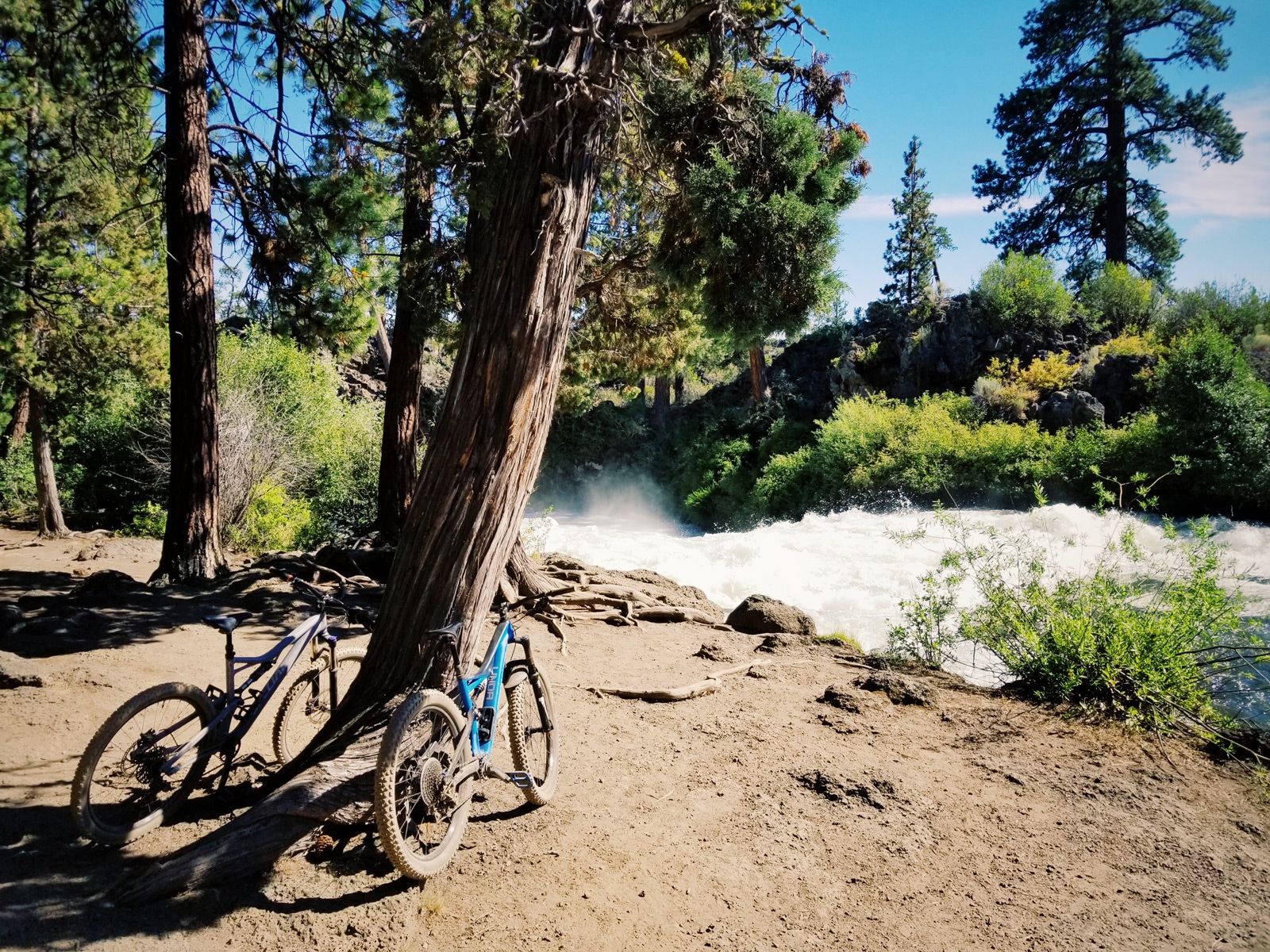
8. What have you enjoyed most about living in Bend?
This is a hard one, because there’s so much I love about living in Bend.
One of the unexpected—but much appreciated—surprises about being here is the amazing water quality. We have community water that comes from an aquifer, and straight out of the tap, Bend water is the clearest, cleanest, most delicious water in the country, thanks to natural filtration through layers of lava rocks.
I joke with friends who are visiting from out of town that they should fill up jugs of water before they leave, because they will sorely miss it!
We’ve also found Central Oregonians to be the friendliest people we’ve ever met, which is a big part of why we moved here. I love how happy everyone in Bend is, because they know how lucky they are to live here.
But the main reason we moved to Bend is right outside our door, where we have world-class outdoor recreation.
It’s such a refreshing change to be able to plan a hike, a bike ride, or a paddle date with friends and not have it take up the whole day (with most of it spent in traffic).
Some of my favorite trails are just 15 minutes from home, and on most days, I only run into a handful of people along the way.
With a season pass, I can head up to Mount Bachelor a few times a week, snowboard for a couple hours, and still make it home for lunch because the mountain is so close. It’s essentially my “gym workout” but way more fun!
(I call the drive up Cascade Lakes Highway my “commute to bliss,” because it is!)
I also started mountain biking when I moved here and I’m loving the new challenges and thrills. Eventually, I’d like to experience splitboarding in the backcountry, learn how to maneuver an oar raft, and maybe even try fly fishing, all of which are easily accessible in Bend. And they’re all the things I hope our kids will love as they grow up here, too.
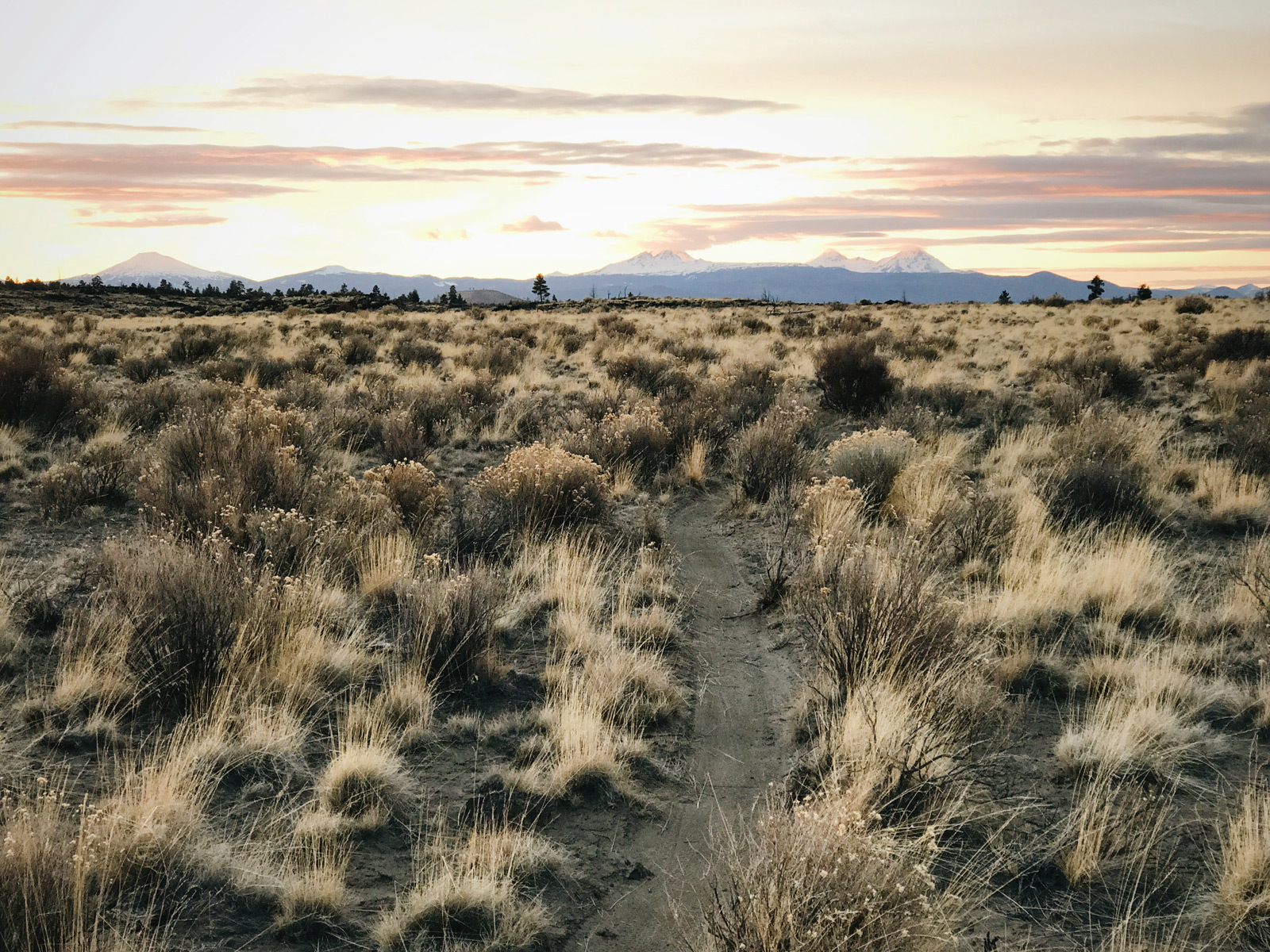
9. What have you liked least about living in Bend?
As someone who was accustomed to late-summer wildfires every year in California, they don’t shock me much in Oregon, but they’re definitely a drawback of living in the drought-stricken west.
There are usually a few days where the air quality is terrible as winds blow in heavy smoke from massive wildfires in Oregon, California, Washington, or British Columbia.
We’re fortunate that we live upwind from most fires, but there have been times when we’ve had to cancel day trips due to fire and smoke. It’s something we expect and prepare for every summer, and camping in August (our driest month) is always a roll of the dice.
I’m also used to coastal living, so the dry, high desert environment of Bend took some serious adjustment. I’ve acclimated by now, but it was a rough couple of years with a humidifier running all night and bottomless bottles of lotion.
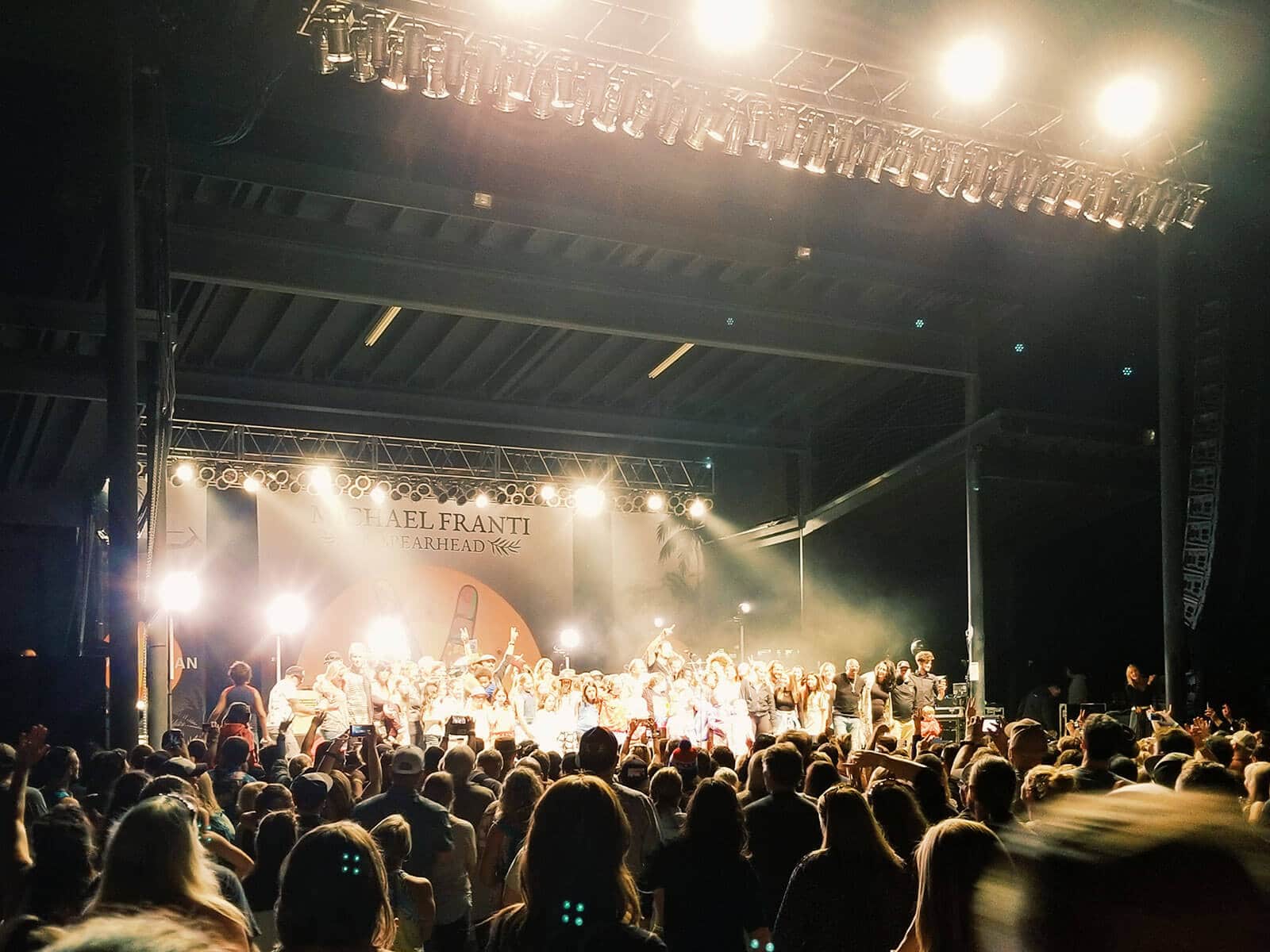
10. Do you think Bend has become too crowded?
Overcrowding is relative to where you came from—in my case, Southern California.
So no, I don’t feel Bend has become too crowded, though a longtime resident may say otherwise. It’s an amazing place to live and raise a family, so I don’t fault other people for wanting to move here.
But, with more people comes more problems. Daycare is in short supply. Housing is hard to come by. There are more qualified people than there are well-paying jobs. The infrastructure in town needs continuous improvement to handle the increase in traffic.
Bend is growing because it’s been “discovered,” but we’d rather live in a growing town than a stagnant town.
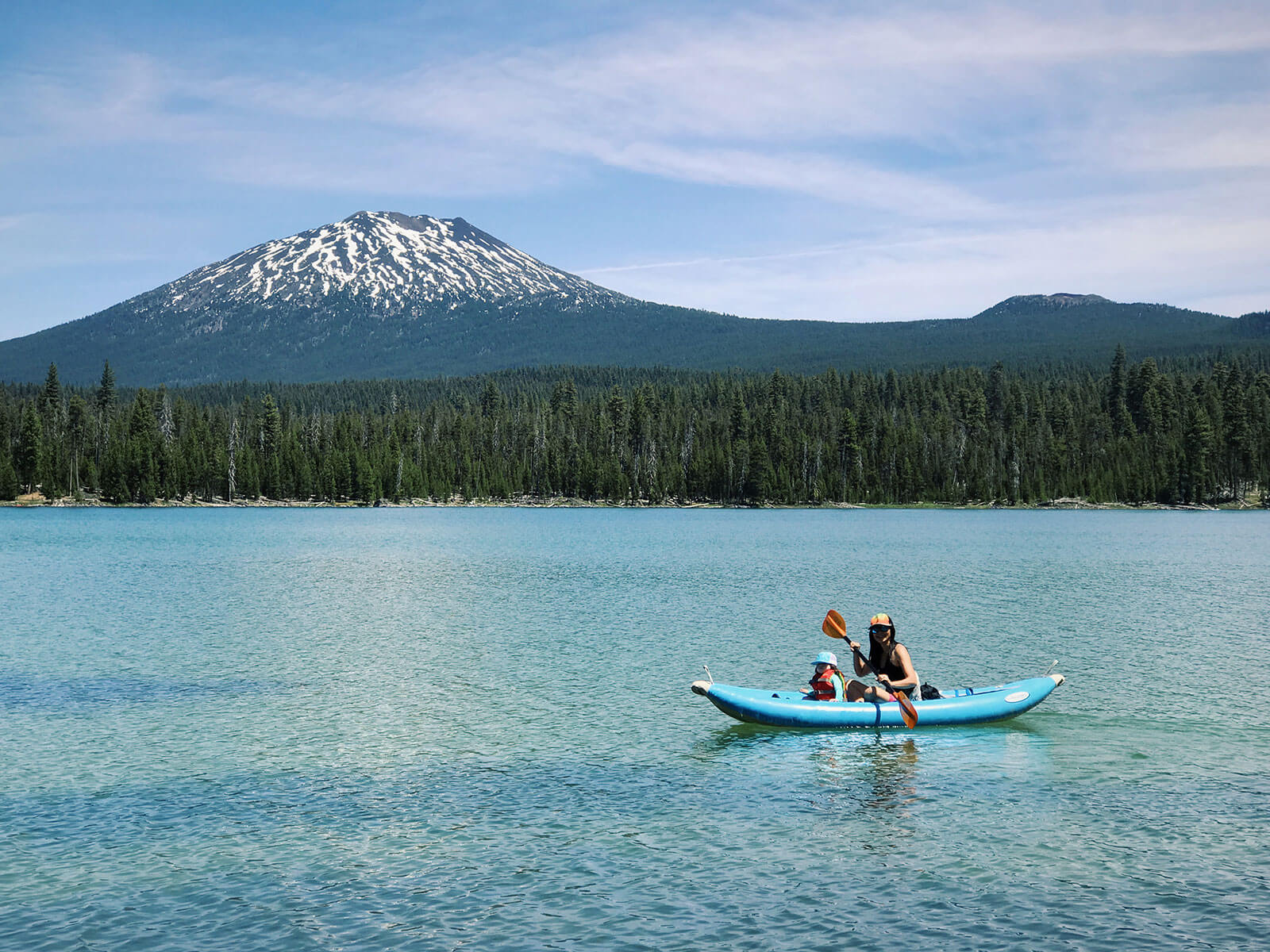
11. What are your thoughts on the lack of diversity in Bend?
Like most (or all?) mountain towns, Bend is primarily white. I’m Asian-American, my husband is white, and our daughters are mixed, so diversity was an important consideration when we were deciding where to put down roots.
When evaluating what we wanted most for our family, we realized it wasn’t having large museums, cultural festivals, or ethnic pocket communities (like Chinatown or Little Italy) in our hometown.
It was having more trees and less concrete. It was being close to the outdoors and away from pollution (of all kinds—air, noise, and light).
We’d rather travel to big cities (which is a real treat for us, now that we live in a rural area) and soak in all the diversity that way, rather than travel to the mountains to get away from the hustle and bustle of city life.
Our children aren’t exposed to different skin colors, languages, and cultures every day, but we strive to foster an open mind through interactions with family, friends, and strangers; excursions that nurture their curiosities; and their everyday learning.
I know this is possible because I grew up in a predominantly white community, as did my husband. And as teenagers, we longed for and lived in New York and San Francisco—two of the most diverse cities in the world.
I feel that people who wish Bend was more diverse fail to recognize what it is and always has been: a resort/destination town.
The activities that drew us here (skiing, snowboarding, mountain biking, and paddling) are considered affluent. Local career opportunities are scarce and funding for social programs is low.
There aren’t any big cities nearby (unless you drive more than three hours to Portland, which isn’t even that big compared to Seattle or San Francisco) and the cost of living is higher than most people think.
Bearing in mind all these factors, the Bend life speaks to very specific subsets of people: those who have money, those who make money by working remotely, and those who prioritize outdoor recreation over materialism.
While I sometimes wish we had more authentic ethnic options when it comes to dining or shopping, I know it just isn’t possible when any new ethnic offering (like an Asian restaurant) is likely to be geared toward tourists. And Bend is not exactly an Asian tourist attraction.
The racial makeup of this town will change over time as more people move here from other cities, but it will never become a melting pot.
And I’m okay with that. Our kids don’t need to be immersed in diversity in order to be accepting of it. If anything, they’ll become more appreciative of what they don’t have.
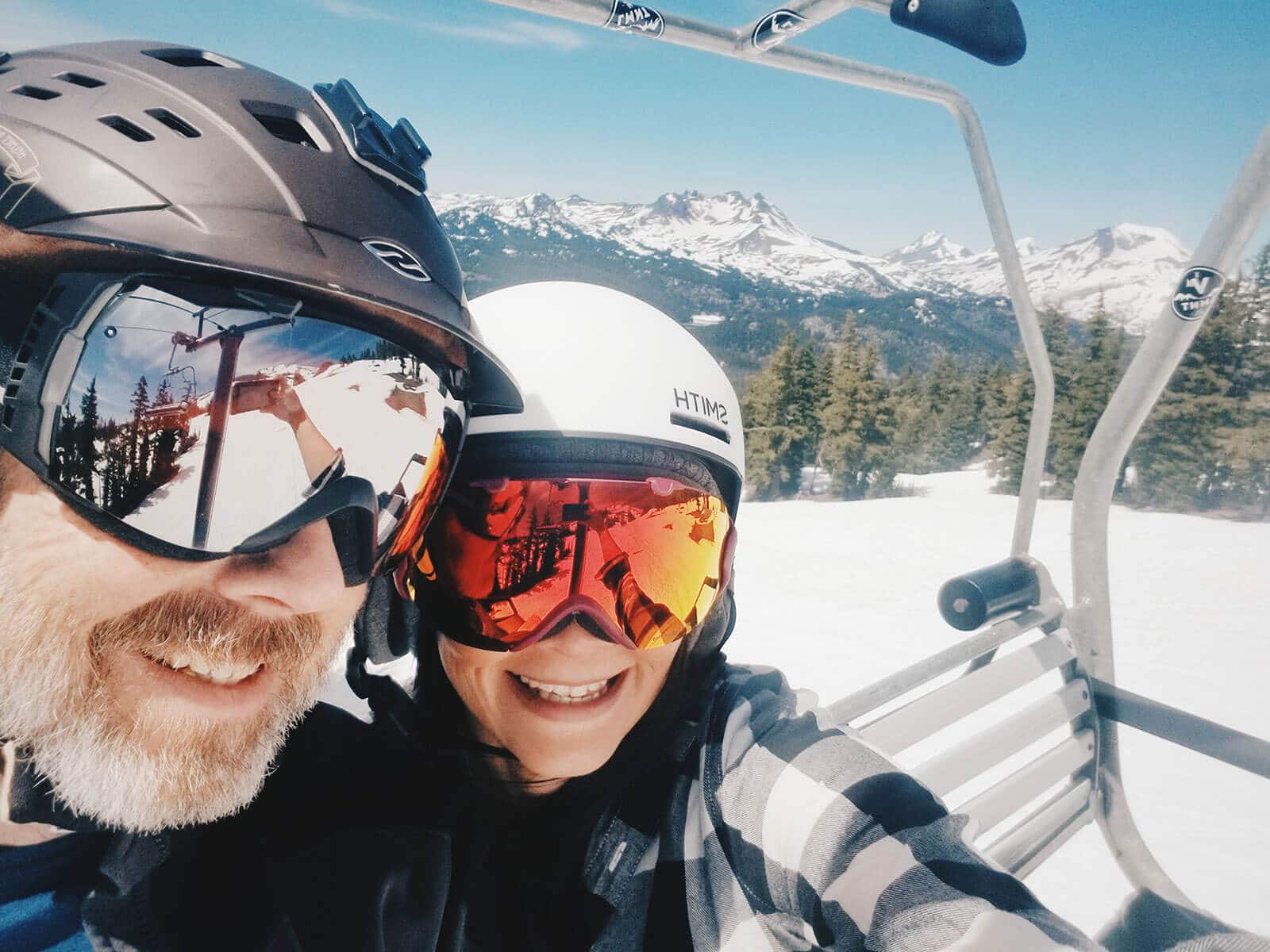
12. Is the cost of living high?
I used to say that we moved to Bend because it was more affordable. And in some cases, that’s still true.
The price of real estate is less than where we moved from in California, and we don’t have any sales tax here. Gas is cheaper and it’s full service.
But everything else? The cost of groceries, restaurants, movies, haircuts, house cleaning, babysitting, yard work, and extracurricular activities (like yoga classes or ski passes) is equal to or, in many cases, even more than what we were paying in LA.
Bend is an island. There isn’t as much competition for products and services, and people have to charge more to afford to live here.
There’s also the lifestyle aspect: outdoor toys are expensive. We always tell people that Bend is a money pit. You come here with your quiver of bikes or snowboards, but soon you want a kayak, a stand-up paddle board, a different bike, a trailer, an RV?! The list is neverending! (Not to mention you need a lot more clothes with the weather here.)
We saved money on housing, but our day-to-day expenses, property taxes, and income taxes are the same, if not more than we expected.
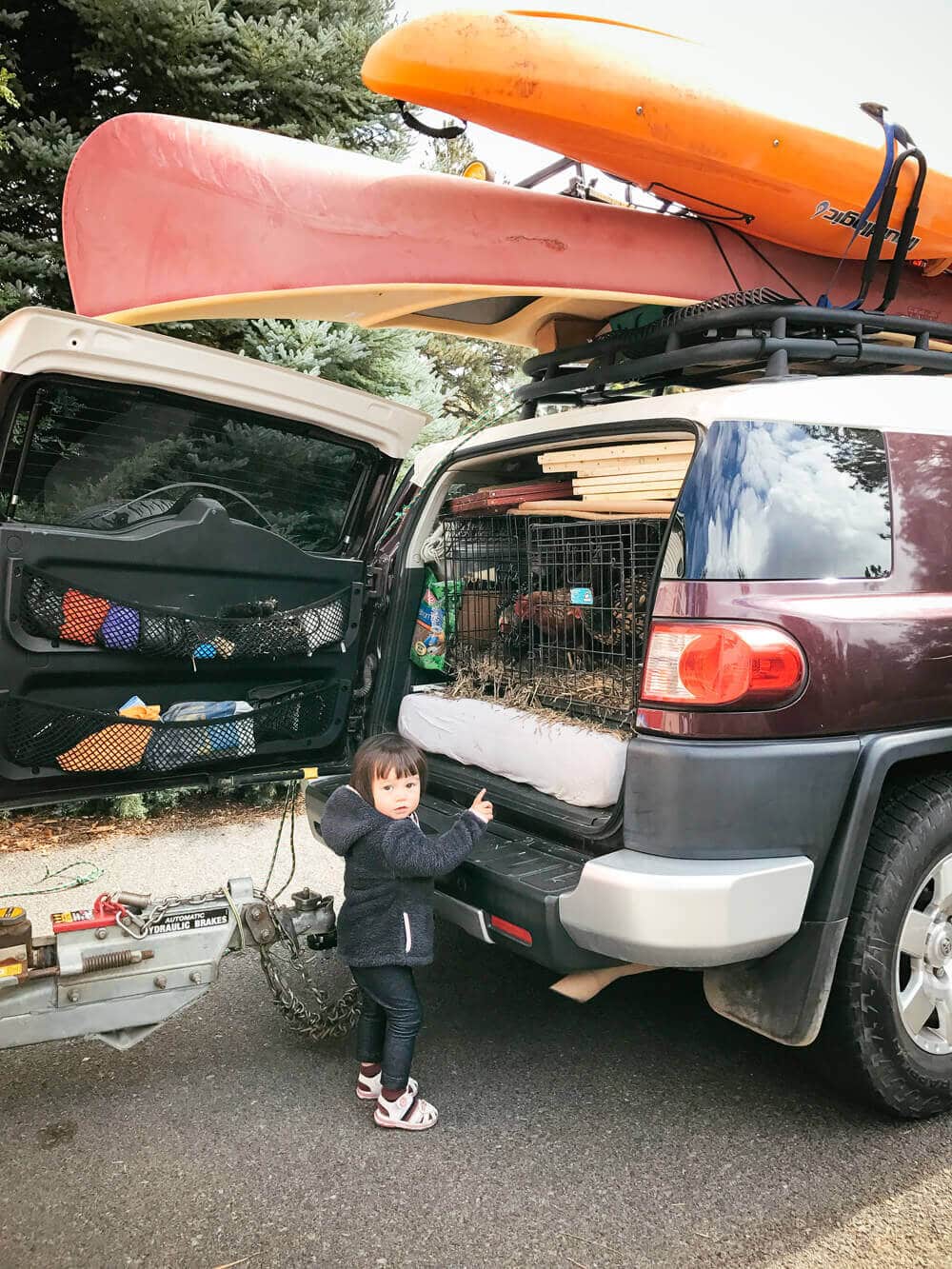
13. If you had to make the move all over again, what would you do differently?
Without a doubt, we would’ve sucked it up and spent the extra money on a full-service moving company. An out-of-state move is stressful enough, but when you have a whole house to move and you’re trying to do it all yourself, it becomes deliriously exhausting.
We did end up hiring help on the Bend side to unload all our boxes, but I wish we hadn’t underestimated the amount of stuff we owned and had a single set of professionals handle our entire move from start to finish.
Thankfully, and hopefully, this will be our last major move for a long while!
14. What advice would you give someone contemplating a move to Bend?
Small towns have limited resources, but Bend is especially limited because unlike other towns, we don’t have suburbs and we’re not part of a larger metropolitan area. So it’s always wise to visit a few times and check off the following list before deciding to move here:
- Secure your housing first: It’s incredibly hard to find a home (whether you’re renting or buying), especially if you have a moderate budget. Like everywhere else, real estate prices in Bend saw a stratospheric rise between 2020 and 2023.
- House hunt in winter: I recommend this for a few reasons: Competition is lower and you’re more likely to work out favorable terms with the seller. You get to see what your desired street and the surrounding streets look like with snow, and with the sun lower on the horizon. (The latter may surprise you if there are lots of trees on that block.) You also get a more realistic idea of what a less-than-optimal commute to stores and schools might be like. This was the main reason we crossed a lot of homes off our list: We didn’t want to deal with winter conditions in those neighborhoods.
- Move here with a job: There are plenty of places hiring in town, but probably not enough places that pay a living wage for the type of lifestyle change most people come here for.
- Look at healthcare options: There’s only one hospital in town, and certain medical procedures or office visits have to be done in Portland. If you require specialized care, make sure the providers you need are available here and accepting new patients.
- Look at childcare options: Unless your children are in school, it can be tough to find affordable daycare (especially under age two).
- Visit in February—preferably after a snowstorm: It gets pretty cold in Bend, and many people don’t realize that winter can easily last from November to May. Easily. (How much do you love winter?) We don’t get as much snow as other mountain towns, but personally, I don’t think snow is the problem—it’s ice. City crews are slow to plow any street off the main arteries, and you need to be comfortable driving on slick roads. (Unlike other snowy regions, they don’t use salt here.)
- Visit in August: This is the most notorious month for wildfires. Come during peak fire season to see how you feel about the smoke and air quality.
- Understand and embrace the climate: Bend is full of microclimates and weather extremes: If it’s blustery and dumping on the south end of town, it’s probably sunny with snow flurries just 20 minutes across town. Even in the middle of summer, rarely can you sit outside and dine alfresco without a heater (or at least a coat) because the temperature usually drops 30 degrees by evening. And if you have a vegetable garden, like I do, you’ll need frost covers for nine months out of the year (if not a heated greenhouse).
- Spend a day like a local: There’s no shortage of awesome things to see and do when you’re a tourist, but the best way to experience Bend is to spend the day like you live here. That is, visit some grocery stores (and compare the selection and prices to your own stores back home), do mundane errands (like getting gas or using a post office), make small talk with the clerks, and drive across town during rush hour. If you still love it after all these interactions, then Bend might just be the place for you.
This post updated from an article that appeared on October 23, 2018.
View the Web Story on what it’s like living in Bend, Oregon.


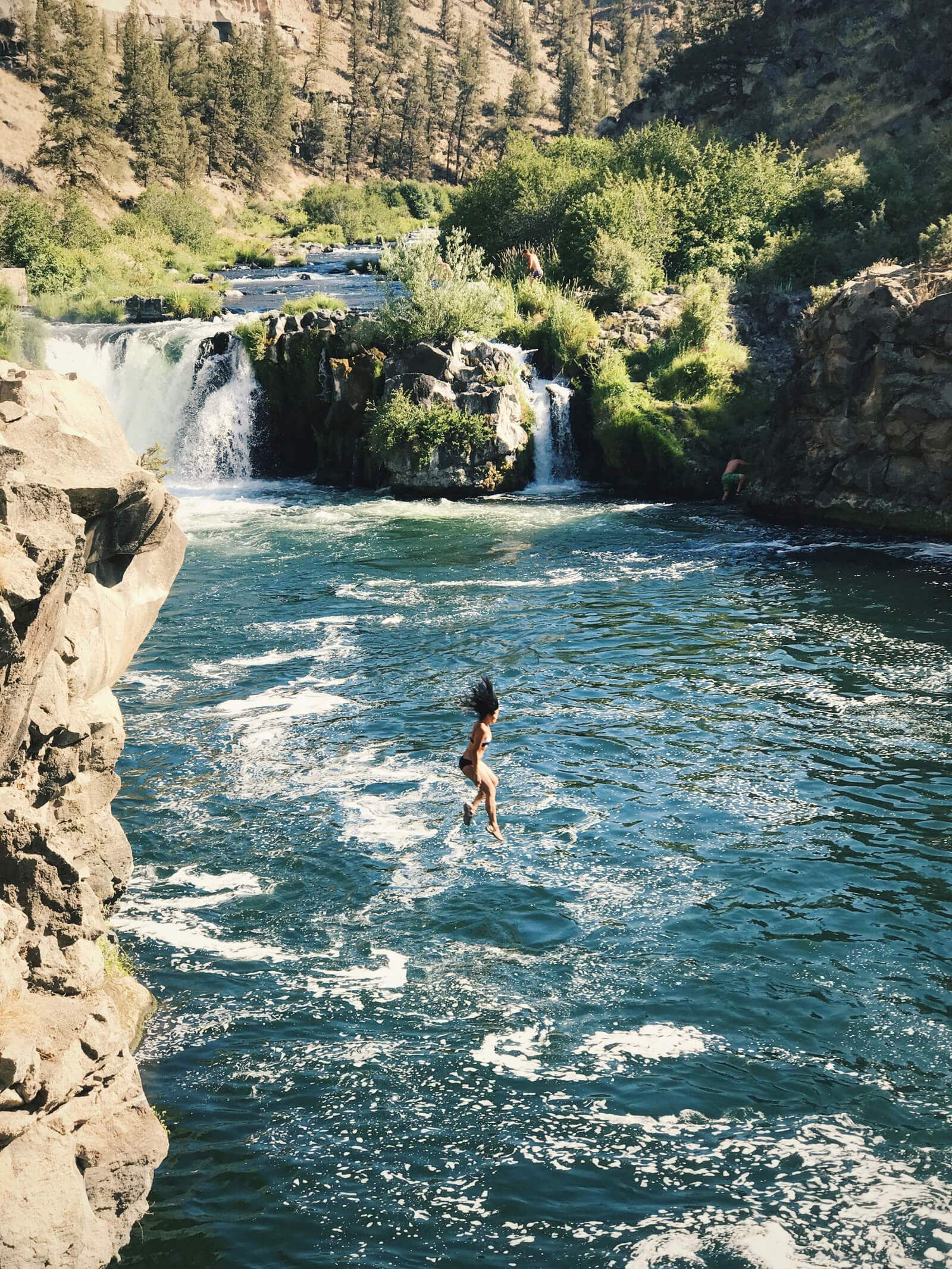













As a native Oregonian and long-time Bend resident, I say the more the merrier. Bend IS a great place to live. Just…PLEASE remember the reasons why you moved here (or want to) and leave your origination mentality behind. Especially when driving around. There’s a level of aggressiveness and lack of consideration that comes from larger city drivers that we simply don’t want here.
I absolutely agree with you. I was born in Bend and moved away in 2010, now living elsewhere in Oregon. I remember being able to go to the lakes and trails and seeing hardly anyone, now it’s impossible to find a spot to park. My parents were driven out of town because the cost of inflation due to Californians buying everything up. It is so so sad to see it become this boujie place where everything is expensive and the “outdoor lifestyle” means driving a brand new Subaru with a $5000 mountain bike on top. Ask locals and you’ll hear the truth. So many people move to Bend without realizing how intense the winters can be, causing tons of wrecks because they don’t know how to drive in it. The only reason I read this article is because it popped up on my Google feed and I needed to know why, yet again, another person feels obligated to tell the world why Bend is so “great”. I doubt it would be in such a state if internet bloggers hadn’t blown up the spot.
Thanks for the trip down memory lane. I lived in Bend were in the 1970s when the mill was still operating and there was still a lot of logging. Back then it was possible to live on very little. I worked at the Elks Club two nights a week and made enough to pay my $100 per month rent. The rest of the time I skied, biked, hiked, backpacked and had a wonderful time. I thought about buying a house for $30,000, but I was still young.
I’m sad that the town hasn’t developed more diversity over the years. When I was there one native told me “there weren’t any Jews in this town until your friends arrived”. By now I expected things would have become much better.
I discovered gardening and realized I had to move to a place with a real growing season. Fourth of July frosts weren’t for me. I’m happy to be living in Central California you can grow almost anything.
Thanks for the chance to reminisce. I’m looking forward to trying your recipes for feijoas/pineapple guavas. They are so prolific here
I need to know where that river jump spot is!
The IRONY of so-called “Bend natives” complaining about being economically displaced and blaming out-of-state movers is too much. If anyone can claim “first” on these lands, it is not someone who lived in Bend since 1940. Please. I’d be curious to hear how the Warm Springs tribes feel about having their tribal lands stolen.
Anyway, this was a really informative, thoughtful and personal account — thanks for taking the time to share your experience of relocating to Bend!
Thank you for this carefully thought out article. My husband and I are considering moving here from Ohio for outdoor recreation and this read was soooo informative!
Gosh, there are some pretty nasty comments here. Being rude isn’t going to stop someone from moving here. The author is sharing her experience which she admits may be different from how long-term residents feel. There are those of us who live in big cities that want a simpler life but also don’t want to be out in the middle of nowhere. I’m here right now to buy land and plan to be in Bend part time by spring 2022. I’ll still spend my winters at the beach in SoCal but I want to enjoy the other 3 seasons kayaking, biking, and hiking without having to drive a couple of hours away to do so. Whoever brought up LA drivers neglected to mention the giant jacked up pickup trucks with disgusting exhaust that ride your bumper when you’re already doing 50 in a 45. Or the guy with the loaded horse trailer who was weaving in and out of traffic doing 70+ on the 97 today. Don’t even get me started on how people refuse to yield at the numerous roundabouts. Nothing is ever going to be ideal but you can’t solely blame newcomers when the locals behave badly as well. I can’t see how being a jerk to someone who is literally the poster child for moving someplace and living a sustainable life while giving their kid an amazing childhood would make someone feel better about themselves. You should be proud that people with diverse backgrounds feel comfortable and safe here. As a Black female vanlifer, I have traveled all over the US looking for someplace that feels like home and Bend checks all of my boxes. I have a high-paying remote job and am happy to pay into the tax system here because I am getting the bang for my buck. Lumping everyone who wants to settle here into one category is a real “build the wall” mentality. I’m glad that enough people that live here have been super warm and welcoming enough to more than offset some complaints in the comments section of a blog. Linda, I think you and your family are living the dream and I can’t wait to build my own garden when I move here. Your tips will be invaluable because every area has completely different soil, water, pest, and climate conditions. I’ll need the help! Keep up the great work and I’m so glad I stumbled across your site <3
Good luck with finding your dream property! The seasons here are amazing, and with your positive outlook, I think you’ll love every moment you spend here. <3
HI Linda,
I’m wondering what Truckee didn’t make your list and how you would compare the two? I read your husband lived in Lake Tahoe and you’re from a city in Nevada. We sold our home in the Bay Area this last fall and have been in Bend since Oct looking for a home and trying to figure out if it’s the right fit. My home town is just an hour + down from Truckee and I’ve always loved it there. I know it’s a much smaller town but have a big City like Reno so close seems like a plus. Truckee feels a little less like an island like Bend does. Both seem great but just different trade-offs! Again, would love to hear your process between the two. Thanks! You’re blog has been a huge help, especially as we are also a bi-racial family.
Hi Natalie, Truckee didn’t make the list for two reasons: 1) It’s just too tiny of a community, even with Reno nearby. I didn’t want to have to drive to Reno for everything—I know it’s only 30 minutes away, but I was specifically looking for a town where I could drastically cut down on the amount of time I spent in my car. And 2) Winters in Truckee are brutal. I can’t handle 6′ tall snow banks in my driveway! Still love to visit there in winter, but grateful I don’t have to plow anything.
Truckee is beautiful and the outdoor lifestyle is similar to Bend, but because I’m raising a family here, I want my kids to have more opportunities locally. Hope that helps!
Have you been to Whitefish, MT? Also a great place with a little more going on. (But too far from the coast for us.)
. I am in Los Angeles and have been looking to move. Hopefully by end of Summer. Many Angelenos have been moving out due to high taxes and the overall reduced quality of life LA has to offer. Texas and Arizona have seen large numbers of Californians (esp. Angelenos) moving to their states. Apparently, Arizona real estate prices have jumped because of that. Bend Oregon made it on my list and fits my lifestyle, but the job market seems slim. Any advice on that?
Jobs are very tough to come by in Bend and when you find one, it doesn’t pay enough to stay here. You have to bring the job or the money with you. If you need income, this is a tough place to scratch a living out of. It can be done but you have to get creative. I think it’s something like 13% of the workforce is not employed in Bend. 25% of the homes are not lived in by the owners. This is not sustainable in the long run and things will eventually tank but this is where we are today.
Hi Mark, I can’t really comment on the job market since I run an online business from home, but from what I’ve heard from friends, good career-type jobs are difficult to find (especially if you don’t have an address in town yet—I think employers are reluctant to offer jobs to transplants that might not be able to find housing). Many people are over-qualified for the work they end up doing. But there’s plenty of jobs in hospitality, service, medical, etc. if those are your fields.
Honestly, Bend still has so many opportunities for business that I think it’s the perfect environment for entrepreneurs to thrive. (Just make sure you have decent savings before coming here.)
You are not unique. The same thing is happening in my is of Central Ca and throughout the nation. It amazes me how Oregonians feel they are unique. You are not. In Calif we have an influx of millions of people from Asia and Mexico and throughout the US. So get ready because all those folks will eventually move up and east and actually already are. I live in Carmel we get tens of thousands of weekend visitors from cities. Our first if Big Sur us a parking lot on weekends and all holidays. The vrbos have driven life cals out. Conservative Californians won’t come to Bend. Wake up and research the rest of the nation it’s the same thing everywhere. Sorry to tell you but you are acting privileged. It us a free country. I’m sorry to hear about the aggressive driving, again same thing here and uninsured motorists are about 25% of drivers here. Research what’s happening at the border down in so cal. I’d be more concerned about that. Texans have bought my town it’s all 2nd and 3rd homes. Sad all around. My bohemian artist town is a mess. So sad.
Personally I think people pine for what they had in their youth. People tend to blame others for changes they don’t like. All communities, large or small evolve and change. The only constant in life IS change. So no matter where one lives…get involved, be a part of the community and actively participate in solutions. No place is perfect.
Hello. I ran across your website and wanted to give you some feedback from a fourth generation native Oregonian who’s family has lived in Bend since the 50s. As much as you seem to enjoy living in Bend after relocating from LA, you have to be honest with your readers about how having tens of thousands of Californians move to Bend has literally ruined our way of life here. We have so much traffic now, and our roads are filled with CA license plates. Every single week, there are fatal car accidents due to the aggressive and distracted drivers moving here. We are not used to driving on 8-lane freeways, nor are we used to waiting in long lines of traffic. We are seeing record numbers of texting drivers, and at every light, at least one car runs the red light and risks the lives of oncoming cars. Crime is soaring! We have absolutely NO available housing. There is nothing affordable to long time Oregonians because Californians have driven up the prices here to 3-4 times previous costs. We now have a huge homeless population, and more and more long-time locals are living in their cars and RVs, because they can’t find a place to live. Home prices hit an all time high last month. $560.000 median home sale price. That is double what it was 10 years ago. It costs $1500 a month for a one-bedroom apt. You talk about enjoying our lakes, trails, etc. yet we remember when you could go any day of the week and be the only people there. Now our parking lots are so packed, cars are unsafely parking all along the roadside, trying to get into a lake or trailhead. Our once pristine lakes now look like a CA oceanside, with hordes of people laying out in lawn chairs on every square each of beach area. They also let their dogs run wild in clearly marked on-leash only areas. We are seeing record amounts of nature and wildlife habitat being destroyed and trampled to death due to the shear number of people on our trails. I’m sorry, but I cannot agree with what you’ve posted here about what life is like in Bend. You may find it inexpensive, uncrowded, and amazing, but to a long-time local, it is nothing like it was just a few years ago before the gentrification and Californication happened to our once very small, peaceful town. Most long-time locals are being pushed out to make room for more Californians who have no real love for Bend, they just want what it has to offer them. When they tire of it, they will simply move on to another town they’ve identified as “desirable” . Do you folks even think to research how many other people have already moved to these towns you find appealing, and maybe think to yourselves, that we may be overwhelmed with the influx, so go elsewhere? It would be one thing if just a few of you moved here, but it has literally been tens of thousands per year, most from the Bay Area and LA. You are changing everything about Bend and are trying to make it just like where you came from. I’m sorry, but you seeking your better life, is robbing me of the perfect life I once had in my hometown. Is that fair??? I’m so sick of seeing all your Facebook pages, Youtube posts, blogs, etc. telling everyone to move to Bend. Can’t you just move here, and realize it is not a place that needs thousands more people to move here? We need to preserve it before it is destroyed forever. Instead of coming here, and cherishing Bend, you all seem to want to do whatever you can to profit from us. We do not need or want thousands more to move here. There are no jobs and no places left to live in. Housing prices have skyrocketed, and there’s less than a 1% vacancy rate. Homelessness is out of control. Traffic is horrendous. If we have to keep building more places for you all to live, our future will include killing our wildlife and deer habitat to make room for your houses, we will experience severe drought, we will eventually run out of water, and we will see more death and destruction from wildfires and fatal car accidents. Please don’t move here, it is unsustainable!!!
Well said and well written Kimberly! As a native Oregonian and Bend resident, I couldn’t agree with you more. Thank you for writing what Bend residents have been feeling and wanting to say for a very long time. I wish Californians would stop bragging about moving here and encouraging others to move here. Bend is no longer the charming and welcoming place that it used to be
Many people come to Bend because of tourism or retirement. (And it’s always been a resort town, according to my Oregon friends.) I’m not sure how you can keep people from deciding to stay once they get here. How do other mountain towns like Truckee and Jackson stay so small?
This is an honest observation, not me trying to pick a fight. (And this is my blog, so no fighting, please.)
Ciao Linda and Buongiorno from Italy!
I live near Vicenza, Italy. I work for US Army Garrison and I am looking to move. I grew up near Coeur d’ Alene, Idaho. I know first hand how things change when “non-local residents” move in. This upsets demographics and a few long-time residents had some unjustified complaints against those who moved in. I lived in Pendicten BC when my family moved after my dad retired from the military. I know first hand of negative sentiment when I lived there in the 60s. There were no jobs that could sustain the family of five and this is why my father moved the family to Idaho. I graduated high school in 81 and worked in lumber mills and mines till 85. I joined the army after the mills closed and low silver prices shut down the mines. The economy for this area was not as robust as it is today. I enjoy diveristy in my current job because it allows me to understand differnet points of view. In today’s political problems, finding middle ground seems to be harder due to unsustainable points of view. There are more rational people who are moderates than our left and right polititians will admit. In my opinion, most people want the best for their children and this is why they move to places like Bend which are attractive. The economy of the location should support your job skills and other needs. I believe in a varriation of the “Golden Rule” … you should treat other people how they want to be trated, not how you want to be treated. This requires a dialog and a desire to reach middle ground.
V/R
Jim Sweatman
Hi Kimberly, I respect your views and understand where you’re coming from. Growth and development is hard when you’re used to life being a certain way. My hometown (in Nevada, by the way, not California) has grown by hundreds of thousands of people since I moved away. It’s a totally different place now, but change is inevitable as economies shift over time.
I’m not going to argue with you about traffic, crime, overcrowding, etc. since I have a different perspective on all that. But I’ll say that pinning all the things you hate about Bend on only Californians is a bit unfair—I meet an equal amount of transplants from LA, SF, Portland, Seattle, Denver, Maui, Austin, Houston, and dozens of states including Alaska. I’ve also met Bend natives who love how vibrant the town’s become. I don’t think anyone is right or wrong here—everyone’s experience is relative to their hopes, expectations, and motivations. So hopefully you can respect other people’s differing views as well.
I want you to know, I feel the frustration in your words and I’m sorry for your pain. I wish I had an answer for housing and homelessness. I don’t know who’s in charge of community development issues, but I think your commentary and research are worth sharing with those decision makers. And I hope you find (or rediscover) your happy place, whether it’s Bend or somewhere else.
I moved to Central Oregon (East Bend) in 1967. I think we would have had all these folks moving to this amazing area anyway. Please do not blame it on the folks from California. More and more folks just learned about what we have here and they are from all over.
Amen to this!!! I moved away from Oregon about 6 years ago. However, I lived in DRW, Sunriver, and LaPine. The influx of Californians was definitely becoming a serious problem – a lot of my friends parents who’d also been in Bend since the 40s and 50s would talk about how it used to be. It’s funny, because the people of bend just keep getting pushed further out into the outskirts – and this expensive boujie stuff is definitely not the lifestyle. I will say, I understand why people move there – as it is really the most beautiful place on earth. I had family out there so that is why I moved. I honestly dream of going back all the time – but looking at the cost of rent I just couldn’t imagine….all my friends that still live there now call it “Bend, California”
Really enjoyed this blog post.Much thanks again. Keep writing.
You’re welcome, I’m glad you liked it!
I’m looking for a new place to call home (I’m 20 miles from San Francisco), and this was quite helpful. I do want to offer this…I raised my son in a predominantly white area, and it would have helped him if I had raised him somewhere more diverse. Regardless of what he’s been taught by me, he has also learned from his peers, and as he says, most important, the experience of life in a diverse population would have helped him feel more comfortable in a diverse population.
That’s an interesting point. My parents did NOT teach me about diversity (since we were the minority in our community) and I grew up embracing other cultures and languages. But, my family was also poor those first few years so our social interactions were more diverse. I guess you just don’t know how a child will perceive things, so you do your best. Personally, we’ll do everything we can to help our girls crave and enjoy the excitement of this diverse world we live in, like our parents did for us.
You mention your parents. How often do you see them? We live in Marin county and my daughter and her husband are looking at houses in Bend. I know it is about a 8 hour drive and 1 1/2 hour flight. They have no children but if they do I will be sad to have them so far away, In fact I am sad already. I hope I like Bend as much as you do. I am not an outdoors person!
Hi Cathy, sorry I missed this comment earlier. My husband and I see our families 3-4x a year. We love road trips, and our kids are a great motivator for the grandparents to come and visit as much as they can. I know how you feel though, my parents often wish we were closer!
I LOVED this catch up post – and am so happy you like your new home. I also love the idea of snowboarding as a quick gym workout – what a dream to be so close 🙂
It is! And I hope it’s something I’ll never take for granted. We are quite lucky here with what we have close by. 🙂
Have what some will think is an odd question but here goes. Is there a lot of hemp being grown in the Bend area? It seems that Southern Oregon is engulfed in hemp fields. I am highly allergic to hemp so I have to take my surroundings into consideration.
Commercial hemp is grown in the rural areas just outside of Bend. I don’t know of any hemp fields within city limits.
Great article, Linda. Loved “After Gemma’s birth, we reprioritized what we wanted for our future, and that was a slower pace, a safer community, better public schools, and being only minutes away from all the things we loved to do, such as hiking, camping, and snowboarding.” … And mountain biking, FOR SURE!! My exact thoughts after our little girl was born too. Lots to think about!
It is! Not a decision to make lightly. We’re planning to stay here for a long time, so had to think about not only the current state of Bend, but also what it might look like 20 years down the line. Our future health may dictate where we end up, of course, but being here also helps us lead healthier and more active lives!
Wow what a great update! I think the Bend tourism dept should link this post! It makes me want to check out the city and see if it would be suitable for long term living. We live in Norcal and like SoCal cost of living (mostly housing) has just gone up exponentially to the point where I’m considering moving out of state (I work from home so it would be easy) but my husband would be a harder sell since he enjoys his state job.
I love Lake Tahoe so your description of Bend makes me think I would enjoy living there.
Bend is definitely worth a visit in any season, regardless of whether you’re thinking of moving here. Our friends from Truckee come here for vacation! 🙂
We relocated to central Oregon in August 2017 from Phoenix, AZ. Unfortunately, we do NOT enjoy living here as much as you do. We live in a rural town outside of Bend and it is isolated and boring; quite a culture shock. I’m still trying to figure out WHY people say they find small towns :friendly and charming.” Really??? It’s NOT true. I have asked some of the people who have lived here many years and they have no answers, they seem “stuck” here! Most town folks we encounter are overly suspicious of newcomers and borderline rude.
The smoke from the wildfires lasted for several weeks, all the way thru August and into September, not days like you mention. The air quality was awful and unhealthy. And, the weather is extreme; early morning temps in the 20s and afternoon temps hovering around 50s-60s. Plus, the wind is very strong.
Also, the traffic in Bend is terrible. Getting around is difficult to say the least and parking at certain restaurants and shops and downtown Bend can be challenging.
I am a University of AZ Master Gardener (2004) and I did have success growing specialty herbs and some beautiful flowers but that’s about it.
You seem so enthusiastic about life in Bend. We, however, doubt we’ll be here past 2020. It is no paradise! And, it certainly does not live up to everything we “heard” about central Oregon.
It’s unfortunate that your experience has been so different from mine. Coming from Phoenix to a small rural town is a huge change, and I can see why you feel the way you do. It’s sad that a few bad apples have ruined it for you, as I’ve found the people in Bend to be nothing but warm and welcoming.
Are you south of Bend? I’ve heard that the climate is often colder because of elevation, so kudos for being able to grow anything at all in your first year here! The weather IS extreme, and I remember my shock at how drastically the temp would drop at night. But after 15 years in SoCal, I was really happy to have cooler nights because I sleep better that way!
I hope you’ll eventually land on a place you love, or perhaps even grow to love where you are as you settle in more. Good luck!